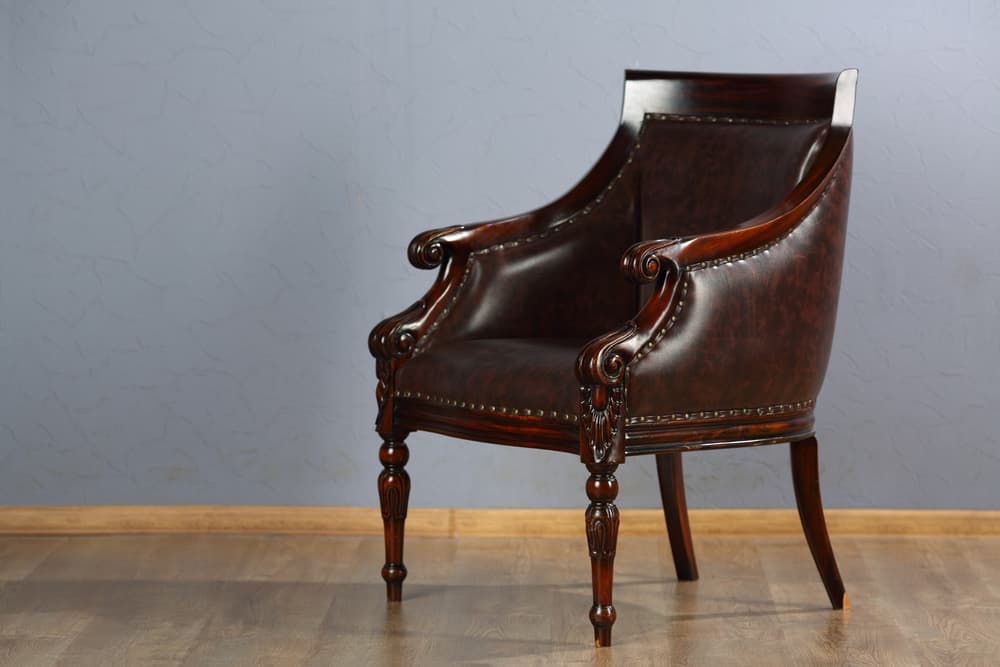The earliest chairs as we know them date back to the time period of the ancient Egyptians. Later, the ancient Greeks and Romans further elevated the chair as a mark of power and superiority, but we can credit all three of these cultures for their lasting influence.
Even before that, civilizations have left clues behind that archaeologists have found which reveal a more humble version of the modern chair such as logs, large rocks, or tree trunks centered within their dwelling spaces.
But for you and I who share an interest in the identification and value of antique chairs, we need to first understand what makes a chair a chair.
Table of Contents
What is the structure of a chair?
Chairs are much more than just something to sit on. Despite their artistic exclusivity, historical significance, and design particularities, every chair shares a common structure.
In its simplest form, a chair has four legs that provide support and height (depending on purpose), a back support, and a raised seat for sitting.
What are the names of the parts of a chair?
As we begin to study the construction of antique chairs more closely, its specific parts and unique characteristics can help you distinguish the time period of its construction which can also determine its value.
Here is a list of the 10 most significant parts of a chair:
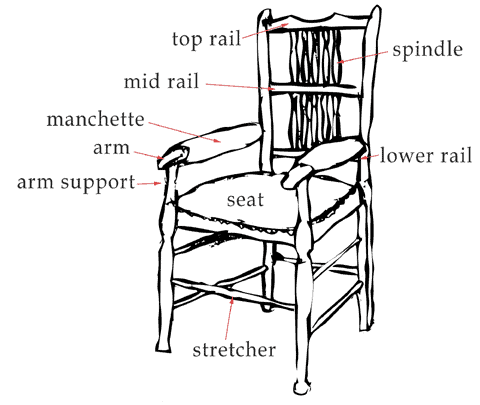
- Seat: the raised and sometimes cushioned platform that you sit on.
- Back: a lumbar support piece that allows you to lean back when sitting.
- Legs: front and rear legs provide height and support to the seat platform.
- Cross stretcher: horizontal support element between a pair of legs.
- Stile: vertical extension of rear legs that provide support to the chair’s back.
- Top rail: the uppermost horizontal connector between the two stiles.
- Cross rail: additional cross members between two stiles for support and style.
- Apron: decorative strips providing constructive support between the seat and legs.
- Ear: decorative elements located at the uppermost pieces of a chair’s back (stiles).
- Splat: vertical pieces on the back of the chair.
How do I identify my vintage chair?
Identifying your vintage chair can be a really fun process especially if you enjoy searching for clues. Upon closer inspection, there are certain features and characteristics that will help you ascertain whether your chair is vintage or antique.
Please understand as you begin the identification process of your antique chair that no direct correlation exists between age and overall value. Instead, several factors must be taken into consideration such as the type of wood used, upholstery material, filling, hardware, and overall craftsmanship.
Nonetheless, you will still want to distinguish your chair as either an antique or a vintage item. Oftentimes, these terms are used interchangeably although there does exist a clear distinction of time between the two. Vintage furniture is relatively younger than an antique – these items are generally at least twenty years old but do not exceed a century. On the other hand, “the term antique refers to something 100 years or older,” according to Rebecca Rau who is an antique store owner featured in THIS Martha Stewart article.
Construction
Throughout the centuries, a wide array of woods have been used in antique chair construction. Though builders may be partial to one selection of wood over another, the type of wood used is one way to perhaps narrow down the era and geographical point of your chair’s origin.
For example, amboyna is a tropical hardwood native to tropical Southeast Asia whose color ranges from golden brown to brick red and is often used in antique furniture of the highest quality.
You can learn more about the types of wood used in antique furniture HERE.
Upholstery
Fabric may not always be enough to determine the age of your chair as previous owners may have had the seats reupholstered. That being said, it would be helpful if you focus on the obvious signs of wear and tear and fabric patterns.
It is unlikely that a completely original vintage chair would have puppy dogs or unicorns printed on the seat fabric. Similarly, I would not expect a vintage chair to have a plasticized seat material as it would not befitting of the times.
You should know that fabric prints on furniture usually follow the overall fashion trends of the era. So, if your seat covers showcase what appears to be a hand-stitched floral pattern or seems reasonably worn, chances are you may have yourself a vintage or even an antique chair.
Filling
The filling is what provides the cushion on a chair’s seat when you sit down. Just like the fabric and material we just discussed, a chair’s filling has also changed over time.
Antique furniture often used authentic materials for stuffing, such as horsehair, hay, and a later transition to a combination thereof which even sometimes included cotton.
Younger pieces began to include feathers, webbing, and other forms of padding underlay, which have mostly been replaced by synthetic foams in the modern furniture market.
Hardware
Did you know that the specific hardware used (or lack of for that matter) for putting together a chair can provide you with some pretty insightful clues as to when your vintage chair was fabricated?
Artisans throughout the times have implemented stunning methods of joining pieces of wood together without using screws, nails, or any other type of metal fasteners. Experienced craftsmen may use dovetail joints, box joints, or the centuries-old mortise-and-tenon joint method to fasten the various parts of a chair together.
Read THIS “How To Date Antique Furniture Hardware” article for some additional insight.
Craftsmanship
As we just mentioned, vintage and antique furniture may just give you the insight necessary to determine the era that which your chair was made. If you notice philips head screws being used, then it is relatively safe to say that you have a more modern piece. Alternatively, if flathead or slotted screws were used, the chances are that your chair is a bit older.
But beyond the hardware and fastening methods used, vintage and antique chair makers would often impress fine details of their aesthetic workmanship to individually characterize their most precious works.
Look For The Mark
But before you pull out your magnifying glass and Sherlock Holmes deerstalker hat, carefully turn your vintage chair upside down and look for a tag, stamp, or other handwritten information.
You may not find anything at all, however, if you are lucky, then the artisan may have simply written their name somewhere on the seat bottom. If so, you may do an internet search and find some valuable information regarding who crafted the vintage chair you now have in possession.
Obviously, a tag with a website would clearly indicate that the chair is a modern production, thereby eliminating any antique roots. But even a vintage piece could present a tag with manufacturing information that includes a name, model number, or other pertinent identifier.
How do I know if my chair is valuable?
Let’s say you were able to find some form of identifying information regarding your vintage or antique chair. After conducting some preliminary research on your own, the next logical step should be to take multiple pictures of the chair from varying angles.
PRO TIP: Be sure to take note of anything that sets it apart such as non-uniform head slots in the underside hardware, type of fabric and pattern used, or whether the screws used (if any) vary in size.
Next, it’s time to consult the professionals if you want to know the actual value of your vintage or unique chair. Most likely, there probably are plenty of resources for assessing the value of your antique chair in your local community. Even in the odd case, there is not, the internet has you covered. Here are several options available to you, including:
- Local Antique Dealer: seek out a local antique collector or dealer and ask for personal recommendations for certified appraisers.
- Antique Events & Shows: do your best to attend several antique events – you will likely be introduced to or be given a contact for an antique furniture appraiser.
- Contact a Reputable Auction House: major auction houses such as Christie’s will be glad to assist you to value your antique chair.
- Insurance Company Tips: your insurance agent should be able to direct you to a reputable and certified appraiser.
- Peruse Antique Trading Sites: visit websites such as AntiqueTrader for information on upcoming antique events or other appraisal-worthy information.
20 Types of Antique Chairs
The variety of antique chair styles is seemingly endless, however, chairs from specific eras that portray the market’s most sought-after workmanship seem to prevail in the antique community at large.
Throughout history, certain eras have been marked by amazing craftsmen whose legacy lives on. You will see that the passage of time marks distinct differences in the overall aesthetic appeal of antique chairs that range from Elizabethan to mid-century modernistic styles.
Will you take a quick glance at 20 of the most iconic types of antique chairs with me?
1. Klismos Chair
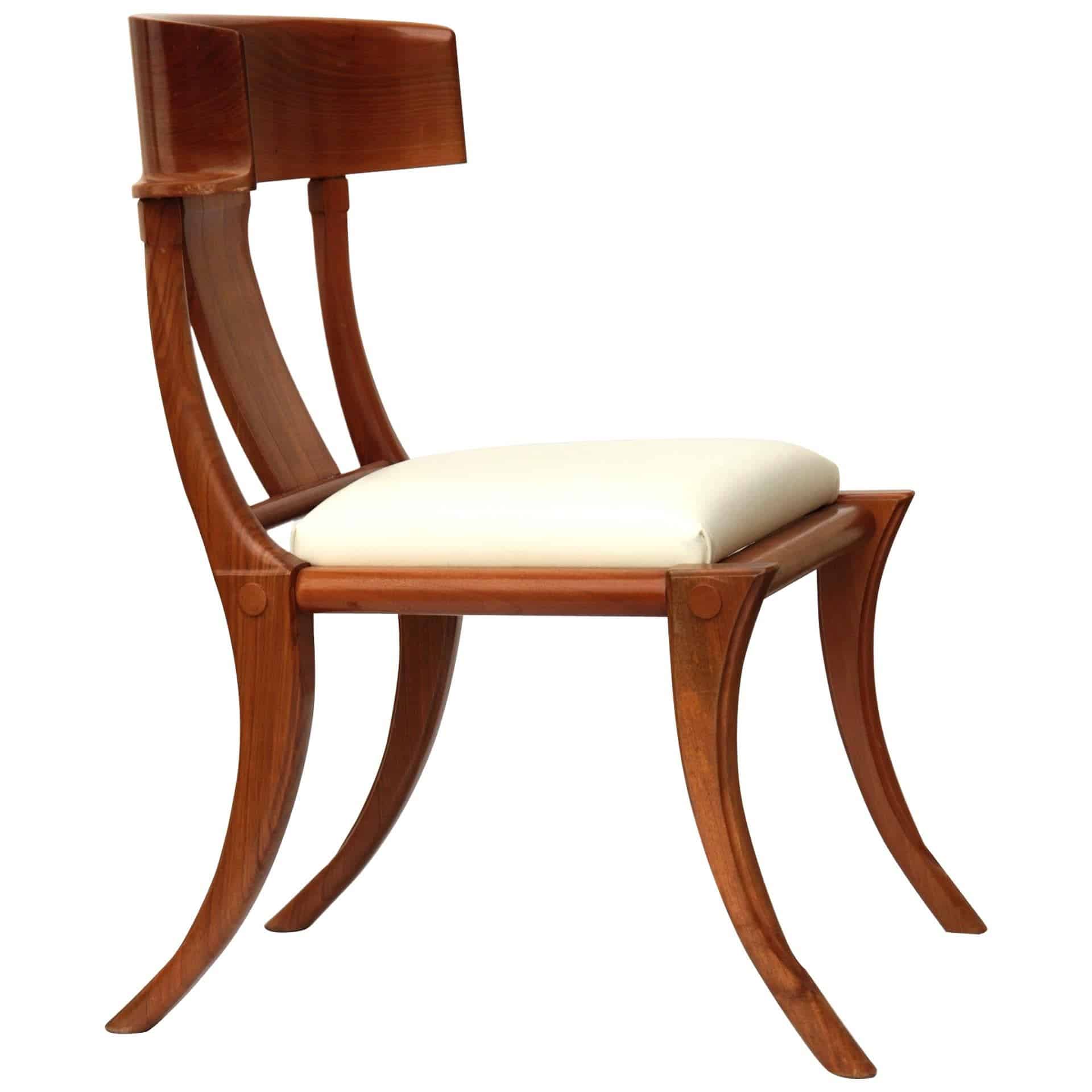
The timeless design of this chair is characterized by a concave backrest, curved back, and curved legs. Its origin dates back to Ancient Greece, but it took three centuries to perfect.
Modern renditions of the chair pay respect to the craftsmen of antiquity, keeping with its original curved design and shape. The Klismos chair left a lasting impression on French, English, and American history and continues to spill into today’s more modernistic furniture industry.
2. Savonarola Chair
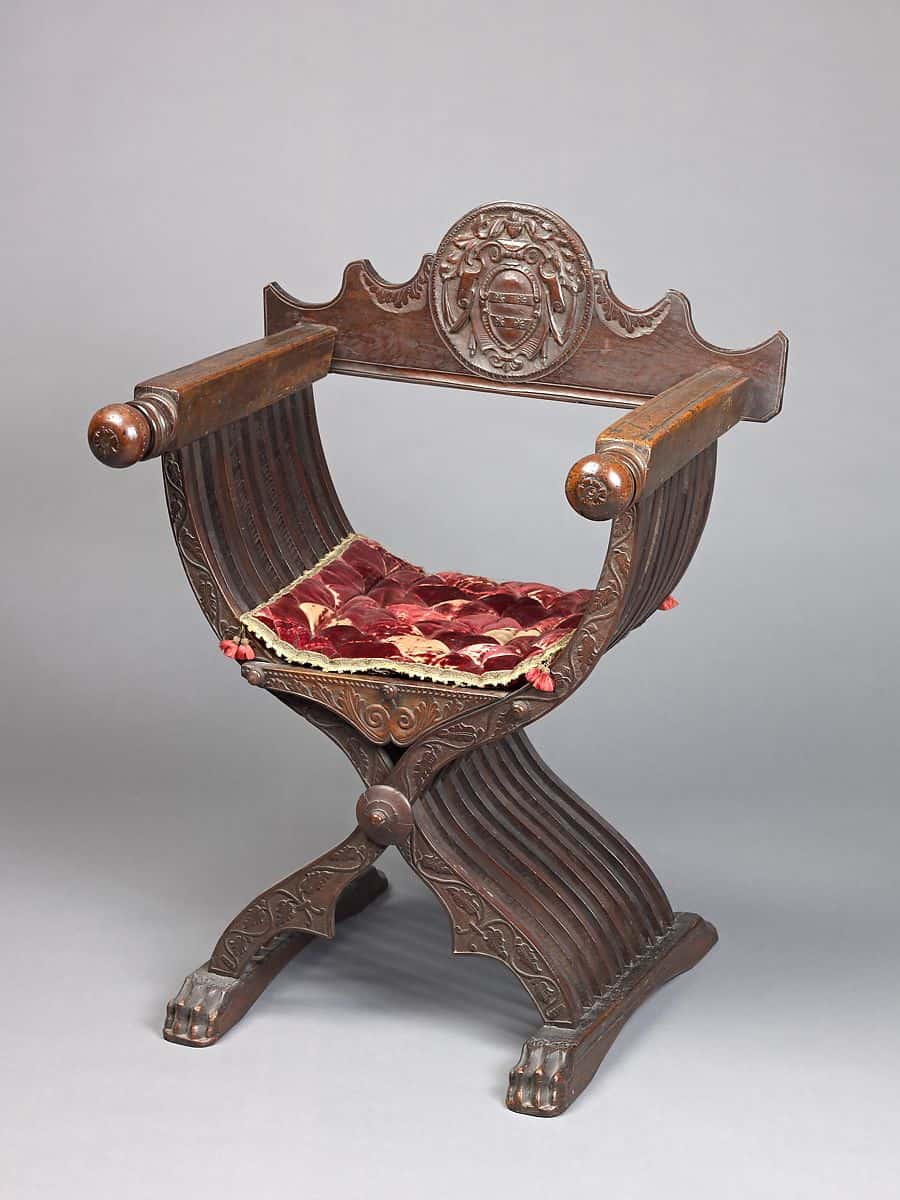
metmuseum
These chairs are as beautiful as their name rolling off one’s tongue. These chairs take their name from the Dominican Friar Girolamo Savonarola of 15th century Italy. The Savonarola design is distinguished by its curved X-shaped leg design that required the expertise of master craftsmen to complete.
The X-chair represented power and authority throughout the Ancient Egyptian, Roman, and Greek empires. Even the modern-day director’s chair is a tribute to the medieval influence of this fabulous cross-legged chair.
3. Yoke Back Chair
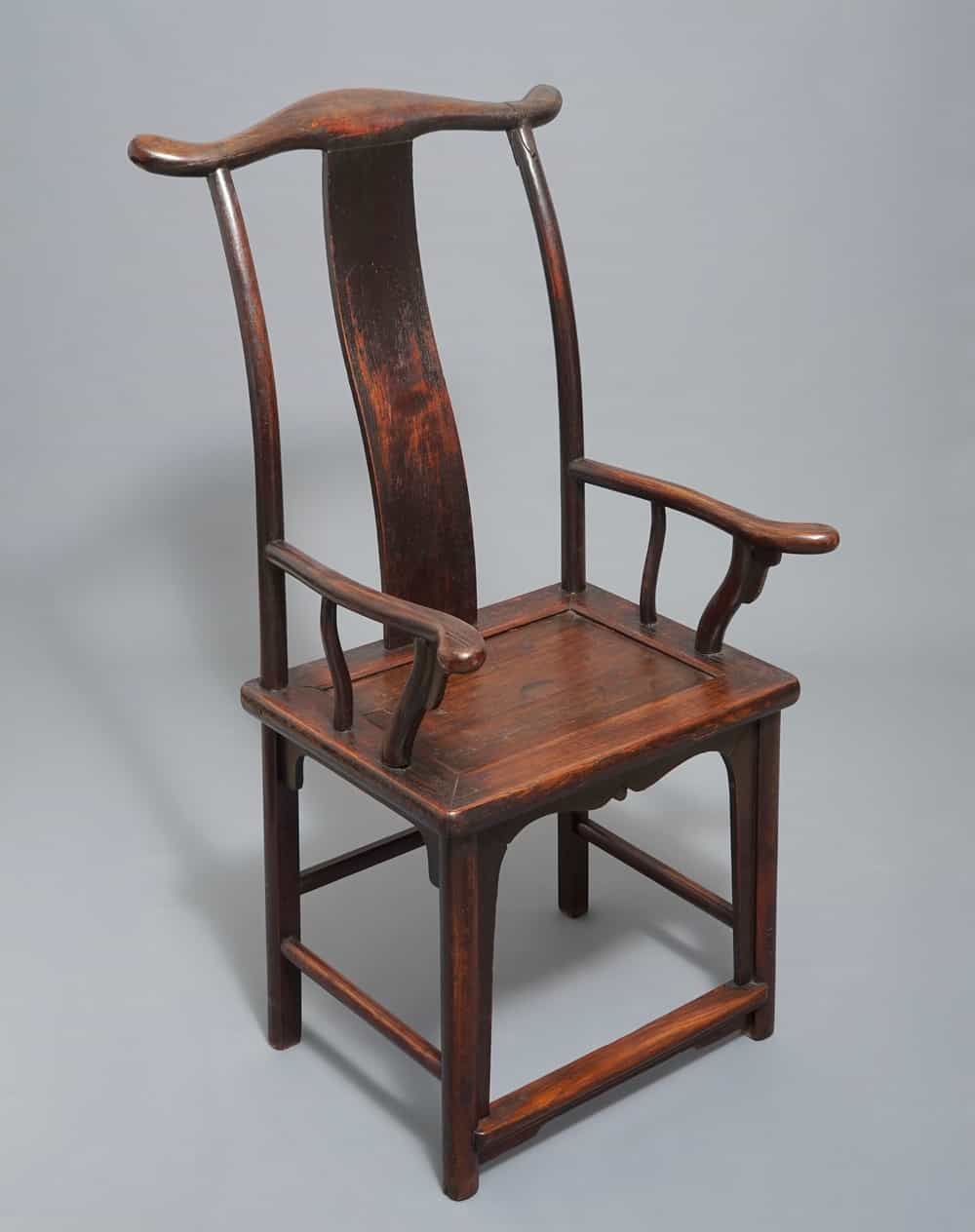
The key attributes of this chair are its wide vertical back support, the elegant stretchers that support the legs, and its powerful back rail which has been widely revered as resembling the yoke of an ox.
The earliest renditions of the yoke back chair are connected to the late Ming Dynasty of Ancient China and were built using a precious rosewood known as huanghuali.
4. Fauteuil Chair
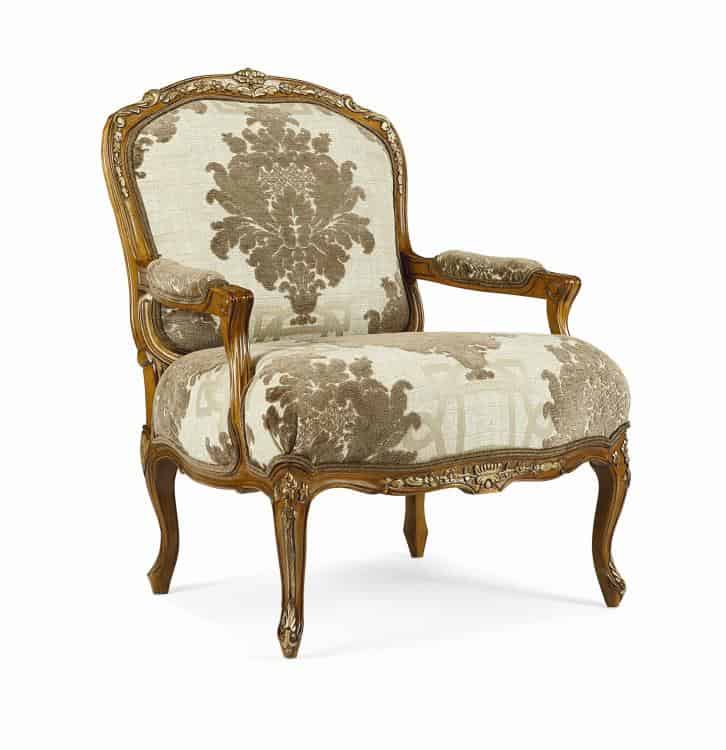
First produced in early 17th century France, the Fauteuil is an open-style armchair expressed by hand-carved ornamental wood, an open frame, and an upholstered seat.
Throughout the time periods of Louis XIV and Louis XV’s reign, these fashionable chairs became exceedingly lighter, more decorative, and graceful with luxurious padding that slightly overhangs the chairs’ apron.
5. Wingback Chair
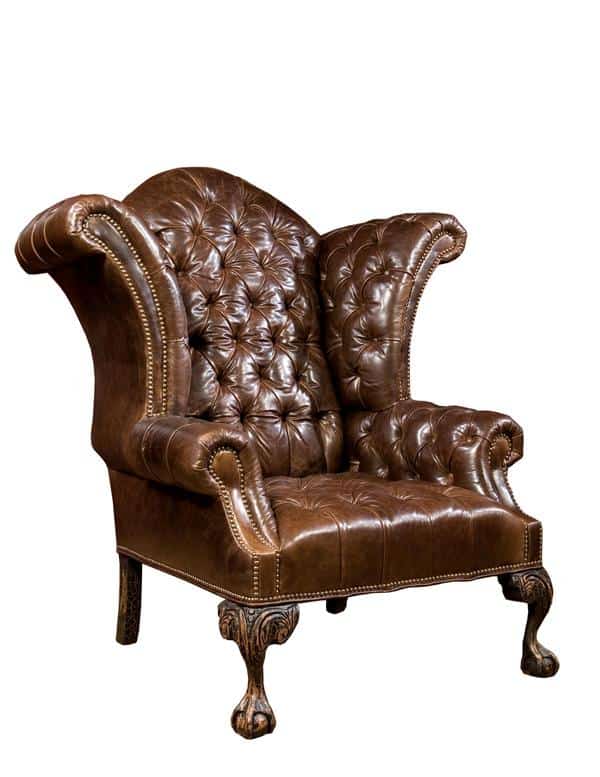
Wingback chairs have a clever design first established in 16th century England. Quite possibly the greatest influence on the modern-day sofa, these fully upholstered high-back chairs with exposed legs served to protect whoever sat in the chair from the cool drafts that infiltrated British home construction.
Historically, these chairs were ideally placed in front of the home’s main heating source, a fireplace. The protrusion of its wings (so to speak) kept the drafts from disturbing the seater while providing a small cocoon of warmth and coziness.
6. Shaker Chair
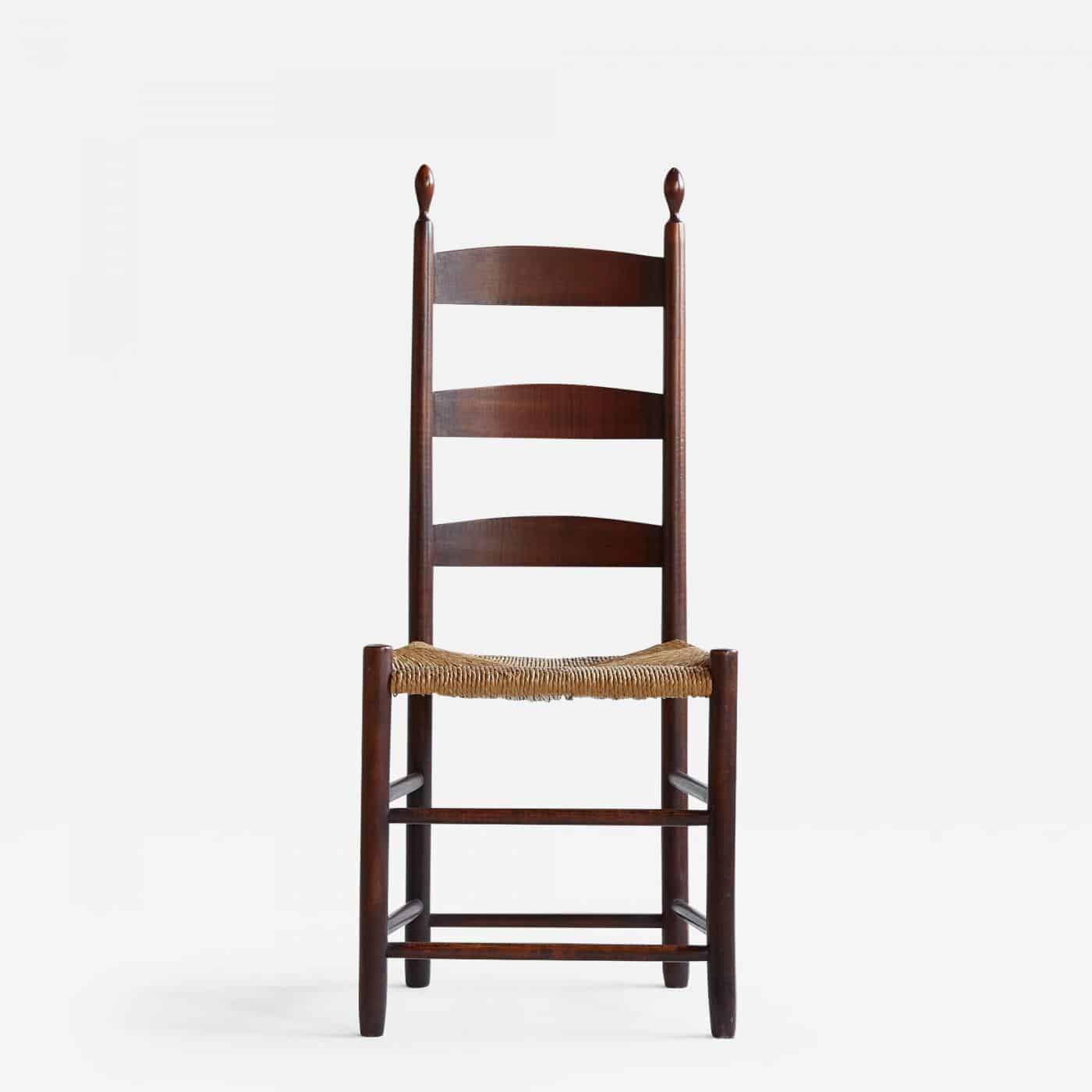
As a distinguished piece of American history, the Shaker chair is easily recognizable by its ladder-back or slat-back design. The minimalist design was introduced by craftsmen within a religious sect of the Protestant church otherwise known as the Shakers.
The beauty of the simple yet functional design of the Shaker chair, even in its rocking chair version, is that it is both solid and utilitarian which is why its model and style continue to pass the test of time.
7. Chaise Longue
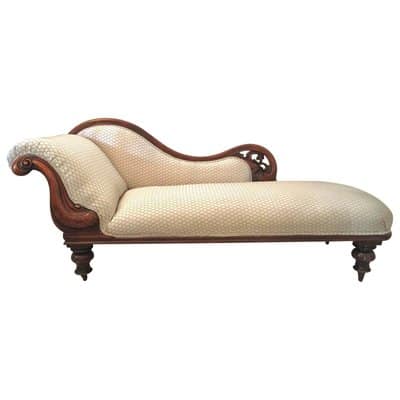
Craftsmen from 16th century France had the bright idea of combining a chair and bed which resulted in a charming sofa-style long bed. Its purpose was to provide a comfortable resting place throughout the day without the need to fully retire to one’s bedroom.
Ancient Greeks and Romans had similar styles of furniture, yet it was during the Rococo period that the chaise longue became equivalent to higher social status. Interestingly enough, this style became the centerpiece for psychoanalysis as initiated by Sigmund Freud.
8. Chippendale Chair
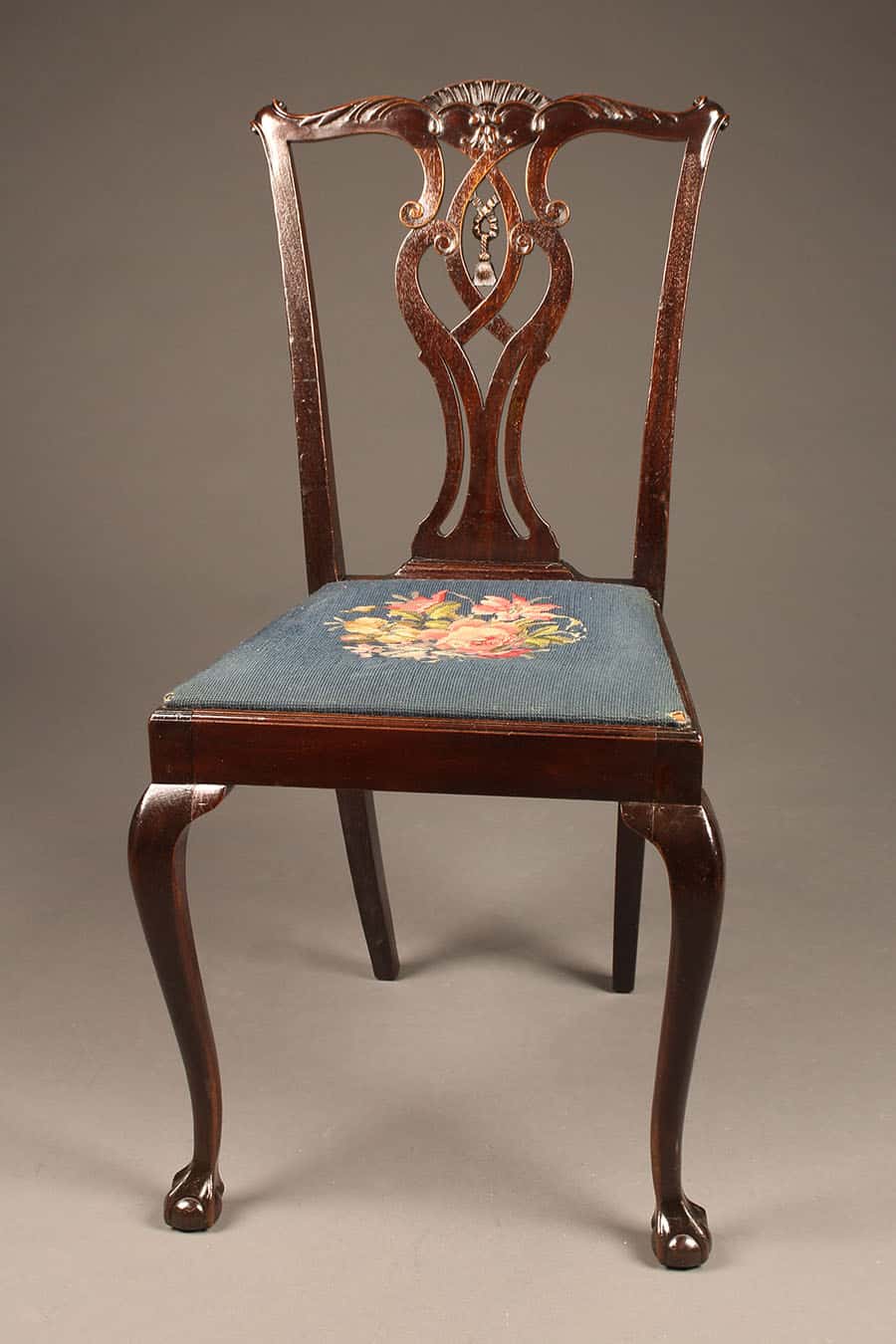
Characterized by its signature s-curves and gothic appeal, the Chippendale chair also pulls from ancient Chinese elements and embraces its cabriole legs.
Thomas Chippendale of London, England impressed several cultures with the highly coveted designs of this signature chair that became representative of mid-Georgian, British Rococo, and European neoclassical styles.
9. Slipper Chair
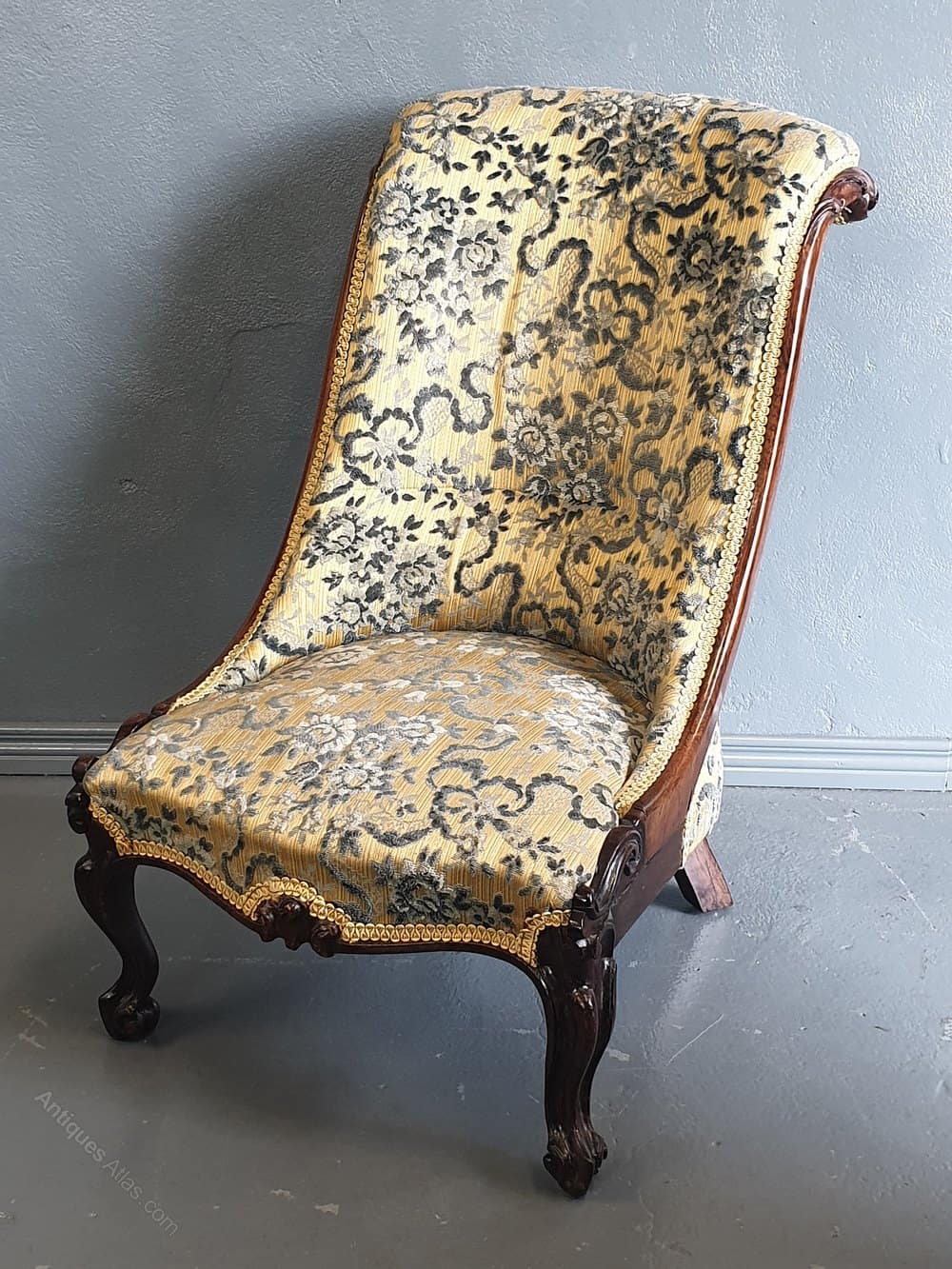
This 18th-century creation was proposed with the comfort of Victorian-era women in mind. These iconically short-legged upholstered chairs provide a comfortable space to sit on while putting on a pair of stockings or slippers.
Nowadays, slipper chairs make for a great accent piece in the American home.
10. Windsor Chair
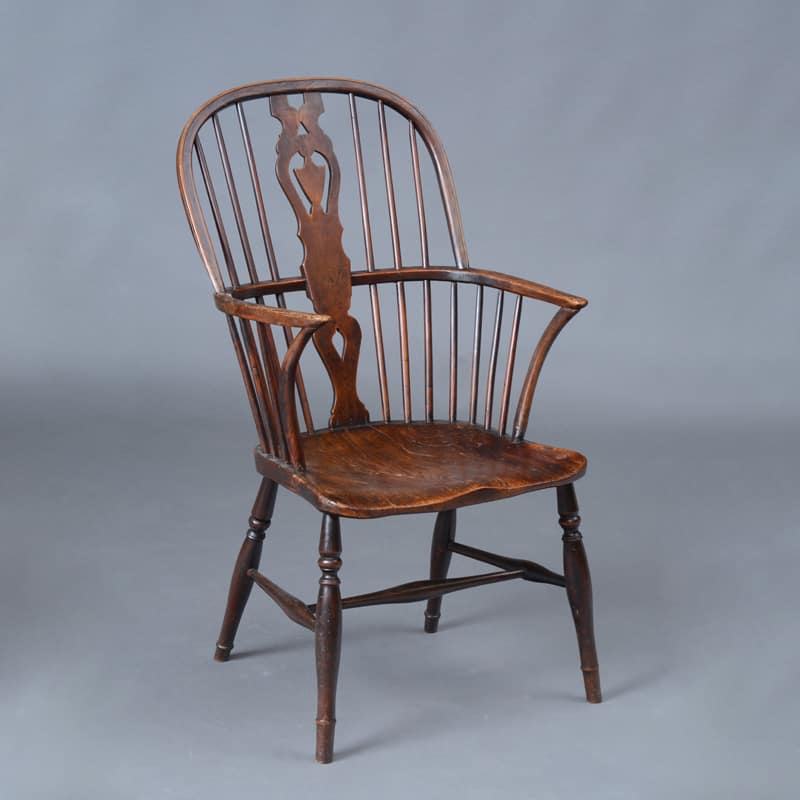
The Windsor is a solid wooden chair whose seat is attached to multiple wooden spindles finished with a curved semi-circular back rim. This originally 16th century English chairs became part-in-part with American nostalgia.
Not only are Windsor chairs easy to manufacture, but their presence is also notable from the front porches of simple country living to America’s founding fathers.
11. Hitchcock Chair
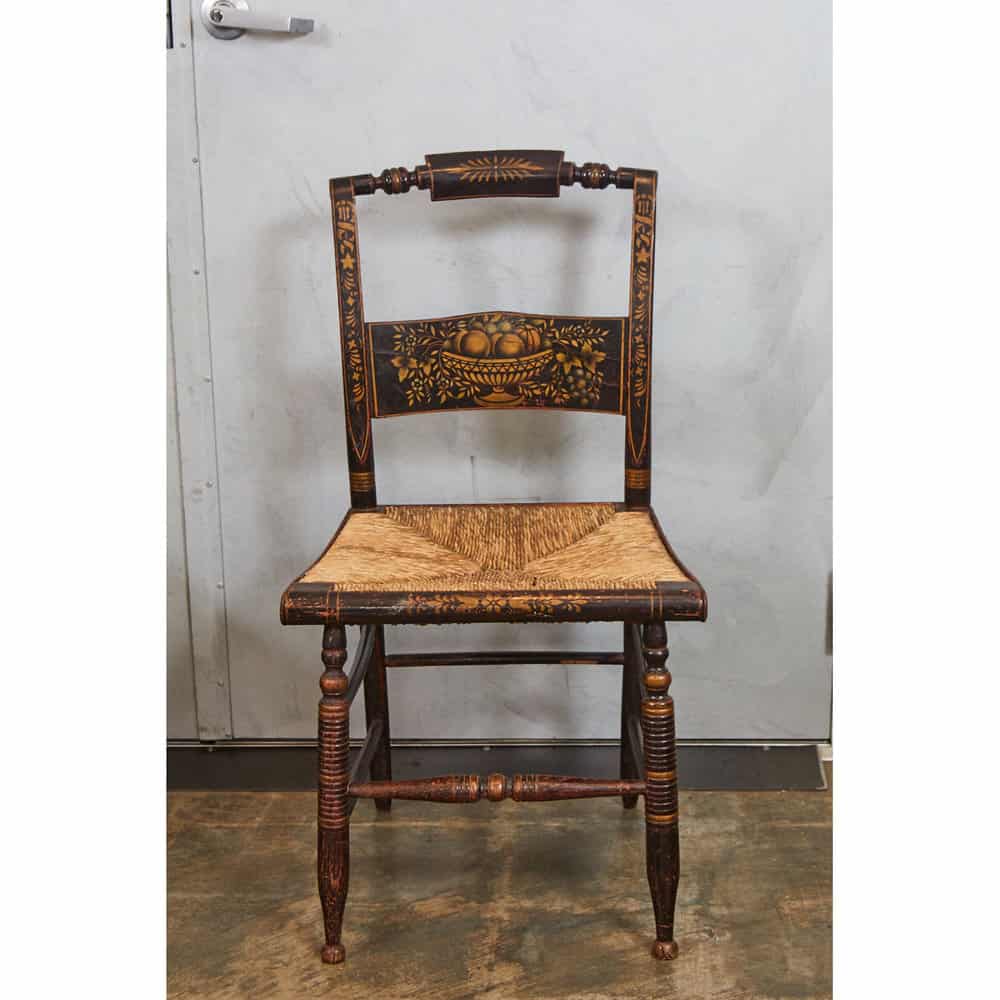
American innovation was at a high during the earliest conception of mass production. Inventor Lambert Hitchcock struck gold and quickly capitalized on his ability to provide fancy chairs to average American homes.
Hitchcock’s development of a cheaper decorative method came through stenciling, rather than painting and so 19th-century American homes quickly looked to Hitchcock for their furniture needs.
12. Tub Chair
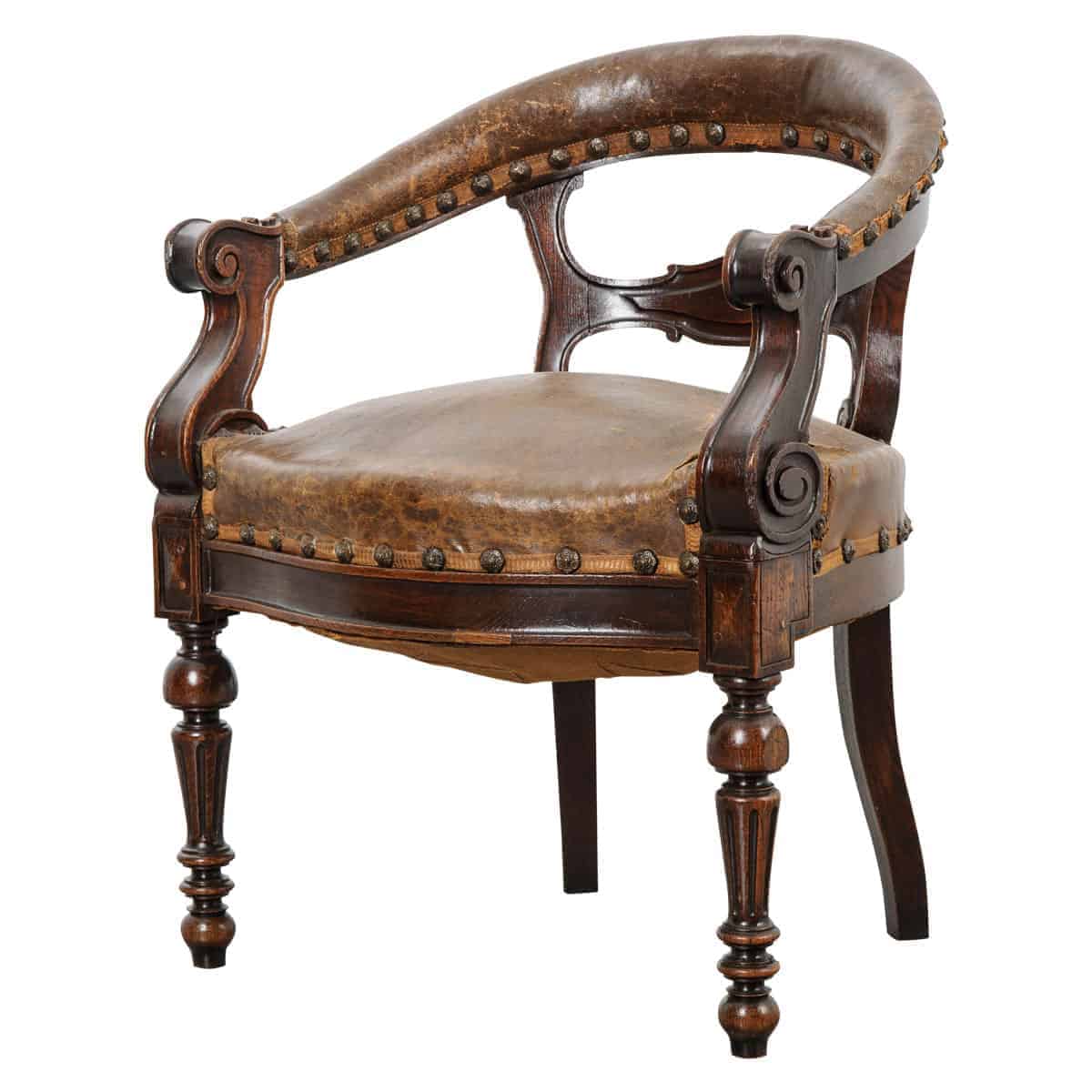
Originating in France, the tub chair was clearly designed for maximum comfort. Marked by a support frame with a comfortable back and armrest, the tub chair’s upholstered and superior cushioning exudes comfort.
Tub chairs are practical solutions for various environments including the homefront and businesses that would like their customers to sit in comfort while waiting for services rendered.
13. Corner Chair
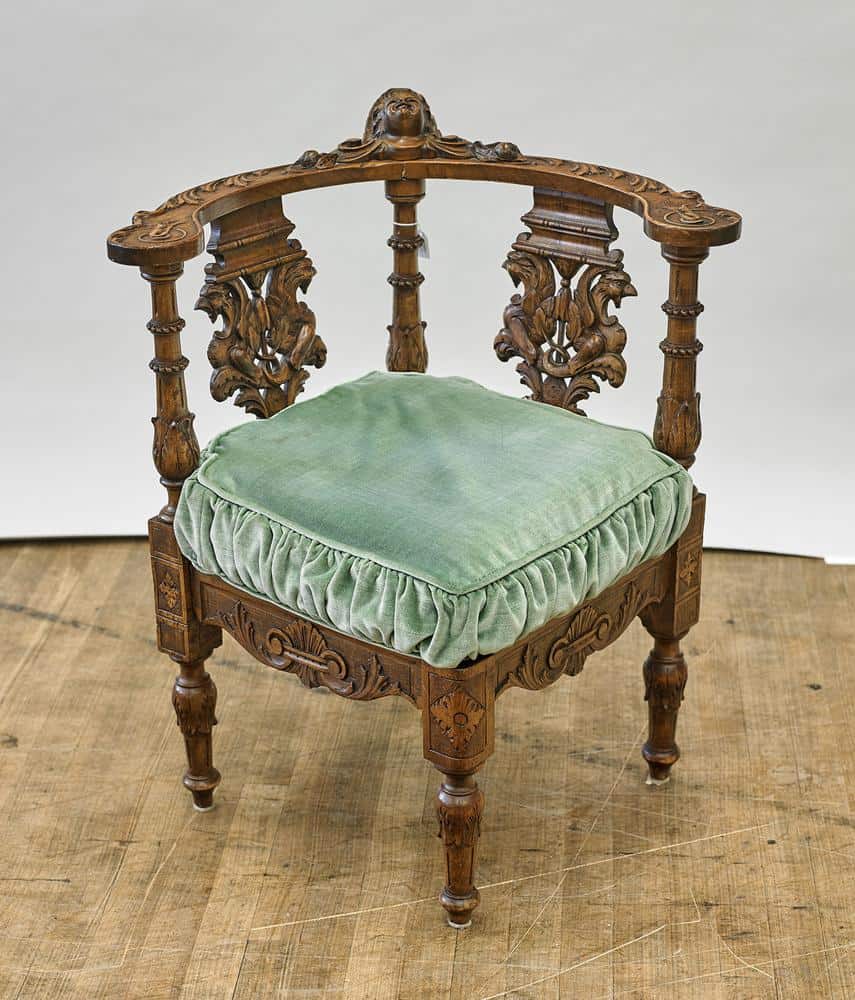
The corner chair rose to popularity in 18th century England with its unique space-saving design. These chairs feature a diagonally set seat with a curved or angular back.
The fashion of these particular chairs spread even to the early American colonies and was primarily used in private spaces of the home and applauded for their long-term comfort appeal.
14. Morris Chair
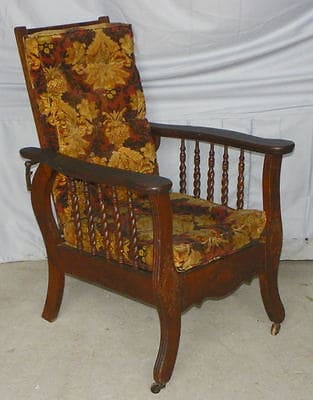
18th-century designer William Morris introduced a deep-seated chair with an adjustable back – now known as a recliner chair.
Morris chairs continue to cleverly utilize a variety of hand-dyed fabrics, cushioning, hand-carved woods, and hardware to inspire comfort and appeal in homes around the world.
15. Georgian Adam Style Chair
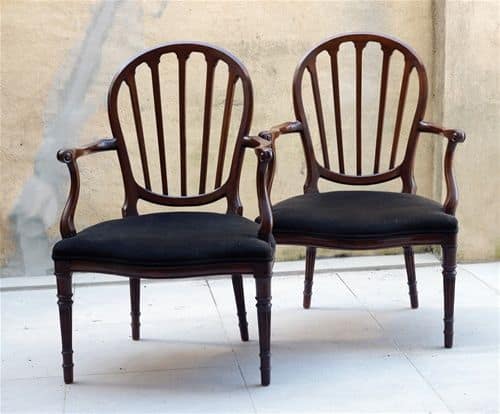
Three Scottish brothers designed and created neoclassical style furniture characterized by a mix of straight lines and curves that later became a namesake in British aristocracy from the time of King George III and forward.
The Adam chair incorporates fine woods, artistically favorable upholstery, and intricate wood design that result in creatively beautiful masterpieces.
16. Ribbon-back Chair
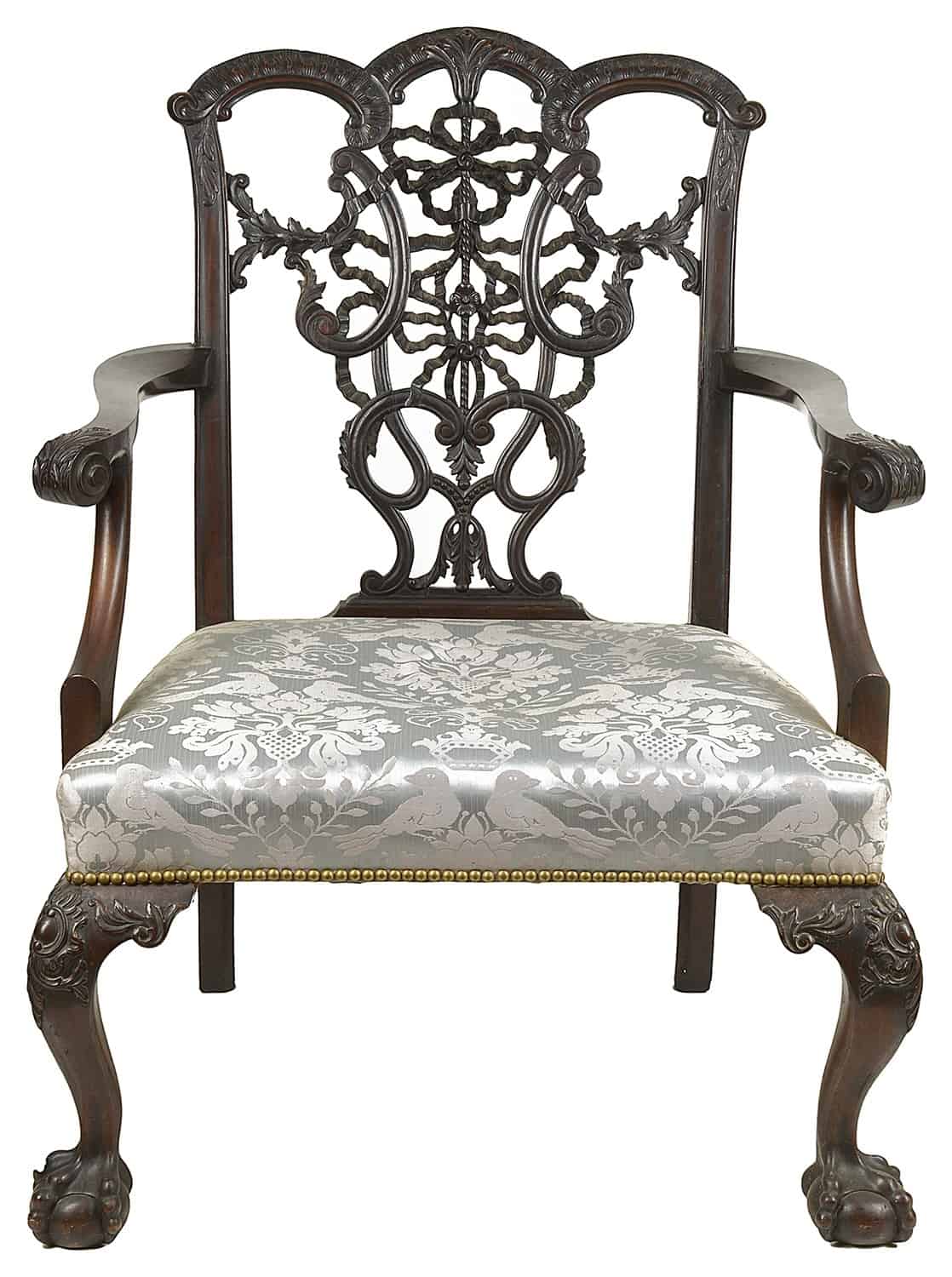
The Rococo era largely influenced the popular bow style back splats of the Ribbon-back chair that is most often associated with inventor Thomas Chippendale.
These beautiful chairs feature ball-and-claw feet and once again became prominent with both 17th century England and early American colonialism.
17. Fancy Chair
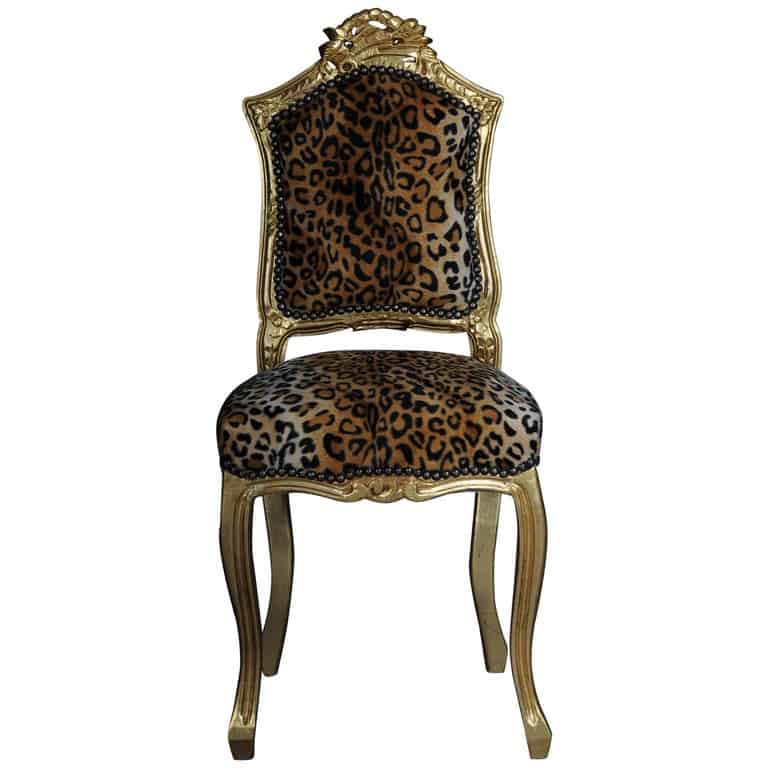
The Fancy Chair which inspired the later Hitchcock chair was ever so popular in 19th century America. The fancy chair became a staple in turn of the century Americana history from living rooms to dining rooms.
Often made from cane, the wood can either be painted or decorated with your choice of stenciling.
18. Edwardian Chair
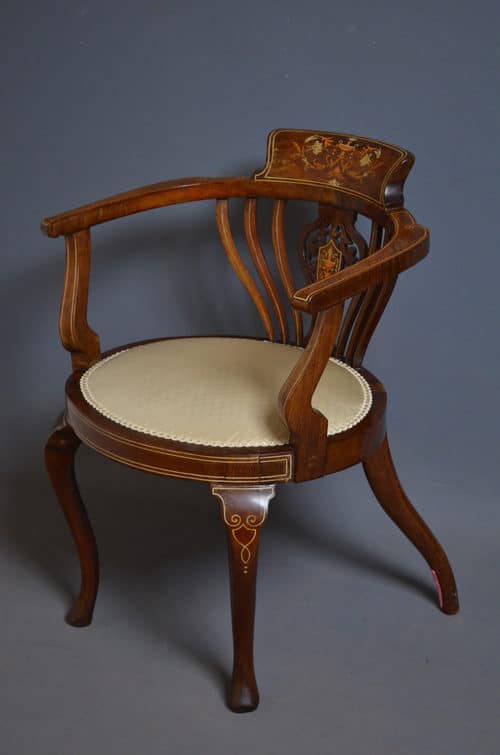
This fairly rigidly designed chair is a prime example of how an era’s socio-political climate can affect artistic prevalence. These chairs are often characterized as dark and restrictive – seemingly retrospective of the reign of King Edward VII.
19. Art Nouveau Style Chair
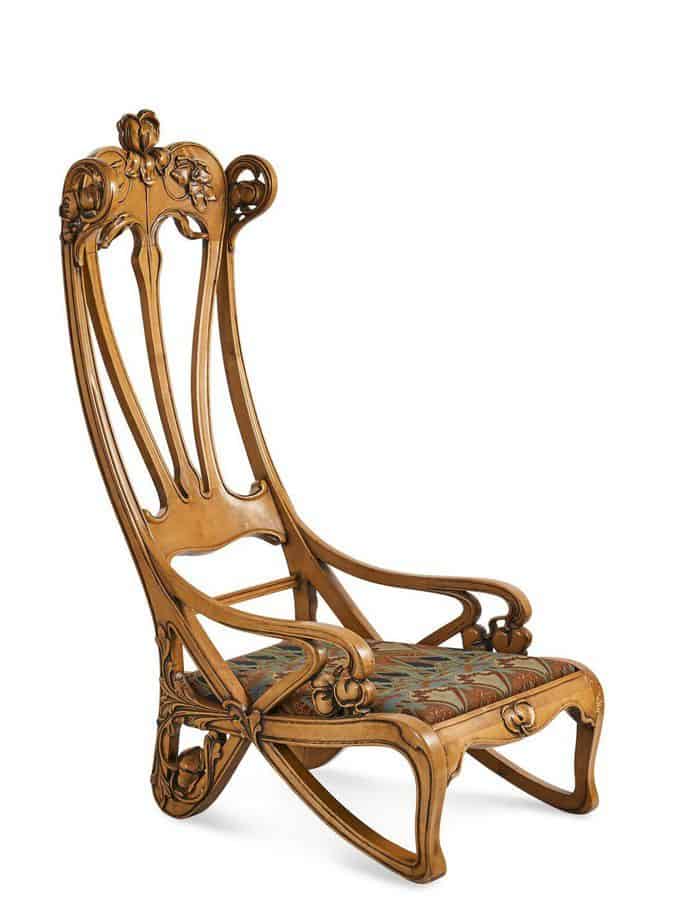
With a new focus on ornamental design, patterns, and style, the Art Nouveau chair was birthed and became a monumental success in France.
With wood as the base material, artists implemented a variety of seat materials, and coatings to provide a creative and inspirational finish.
20. Queen Anne Style Chair
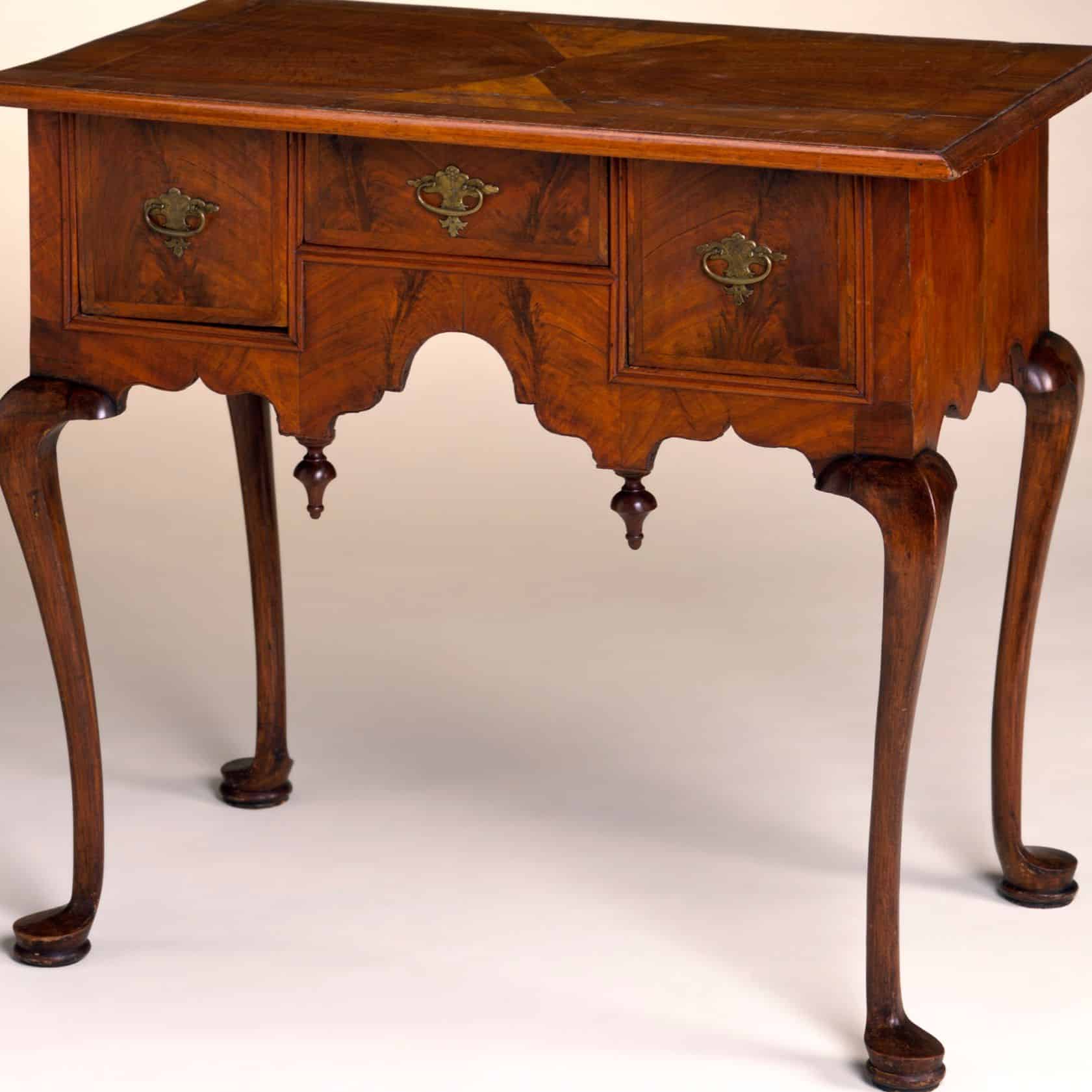
Designed on all sides of Queen Anne’s reign, this style of chair is monumentally characterized by cabriole legs and various c-scroll, s-scroll, and s-curve carvings, shapes, and other decorative elements.
The Queen Anne style produced lighter and more comfortable seating than what England had previously seen.
Is there a market for antique chairs?
The answer at best is It depends. The antique market as a whole usually follows a demand cycle and lately this niche market is on a downward trend. Unfortunately, those heirloom pieces that were so precious to our parents and grandparents just are not exciting enough for the majority of millennials.
But there is always hope and at the end of the day, it comes down to the individual antique enthusiast or dealer who can fully appreciate the value of your antique chair. And who knows, if you decide to hang on to the chair, your kids or grandkids may eventually end up fighting over who gets to display it in their favorite room in the house.
When it’s all said and done, it would be helpful to remember that real-time value is given to antique furniture based on the following:
- Age
- Condition
- Material Quality
- Artistic Style
- Craftsmanship
- Overall Aesthetic Appeal
Current trends and popularity have a tremendous effect on the overall value of antique furniture, however, some pieces continue to floss hefty price tags for big spenders who just can’t go without.
For example, a set of Six Important George III 1760 Thomas Chippendale Chinese Pagoda Dining Chairs are currently listed for $186,960 on The UK’s Largest Antique Website.
If that is not staggering enough, then your jaw will certainly drop when you hear how much the Dragon Chair made by designer Eileen Gray over a hundred years ago sold for – $28 million.
